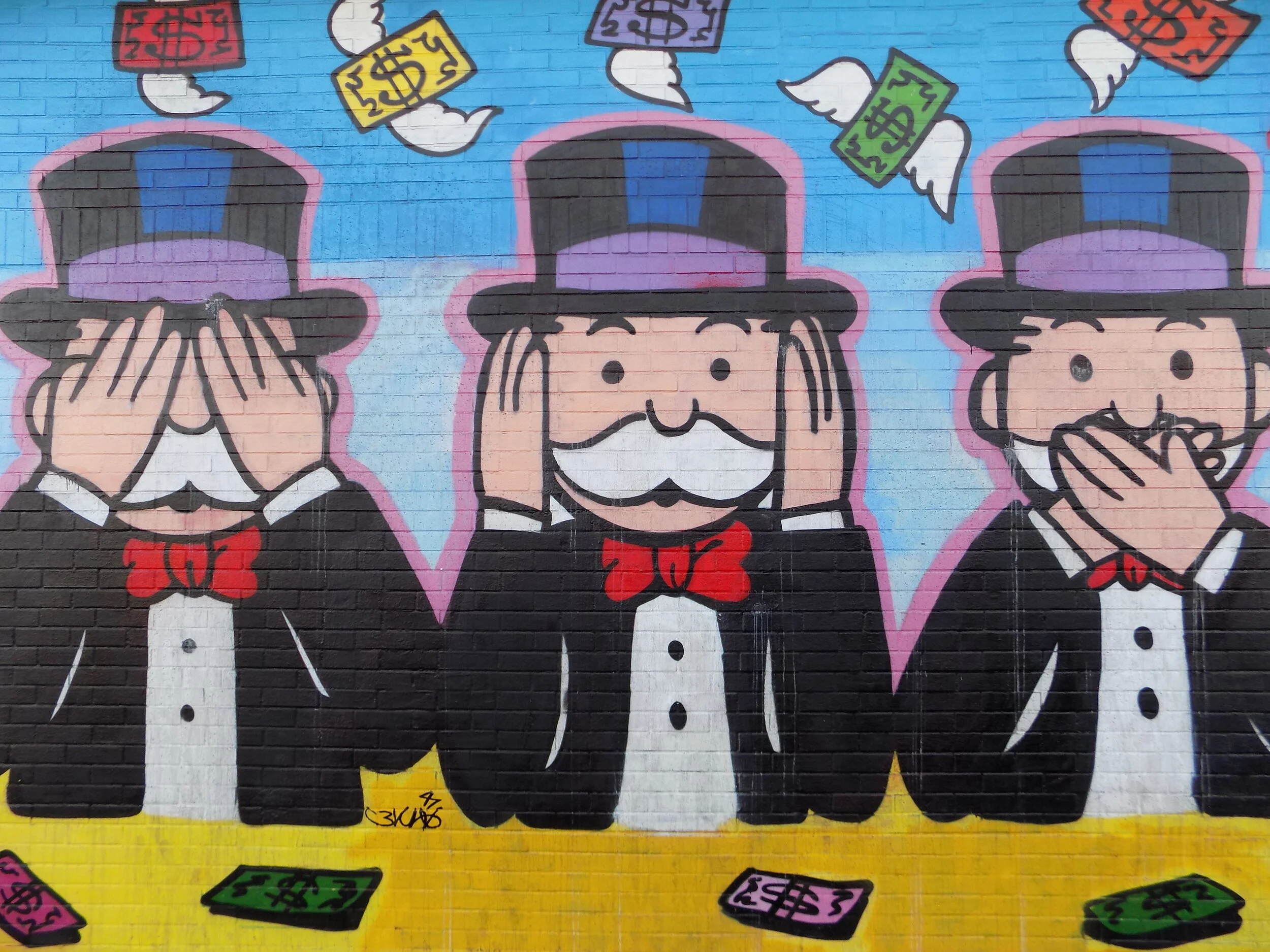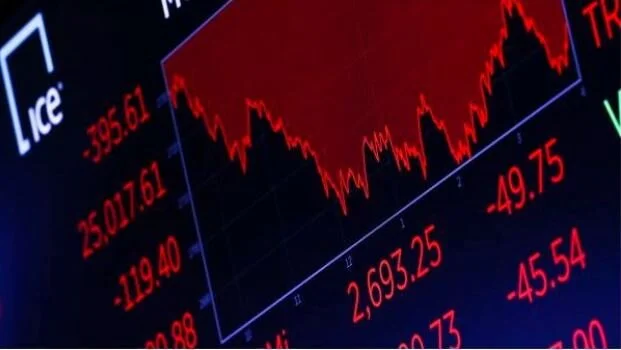I am not a professional economist. It has been 35 years since someone paid me for my opinions about the economy or to project or interpret economic trends, and the world has spun too many times since then for me to claim relevancy. I am an analyst by nature and by practice, and that capacity does not require a paycheck to remain valid.
The following may be a bit deep, but if you’ll bear with me, you’ll have a far greater ability to understand what is being done in your name, and how it will affect you, your retirement and your children’s life. In many ways, you’ll better understand something that affects the national security and defense as much as the tanks and ships do, or perhaps more.
America finds itself at the doorway of a complicated maze, with the options distorted by the context and timeframe that you choose. Getting through the next six months? There are challenges that can be met rather easily through massive infusions of capital, an assumption of debt, and the provision of credit facilities dedicated to the moment. Surviving the next five to ten years? Very different choices indicated, and a question of how much short term pain can be acceptable in order to prevent long term suffering later. Worried about the next generation? We’ve probably already missed that window, but if not, the answers are entirely different and even more unpleasant.
From the public discourse, I can confirm that the vast majority of the population, the media and yes, our political establishment are not particularly well versed in economic theory, or for that matter, logic and critical thinking. For those who have had better things to do with their free time than to argue whether Keynes is dead or just dormant, I’ll go through a couple of important basics before suggesting some things worth considering. I will, to the extent that I can, be brief and keep things simpler. It is not necessary to understand nuances here; the current impacts are of the sledgehammer variety, and we’re operating with the bluntest of instruments these days.
Fiscal and Monetary Policy… What Are They, and Why Care?
First, we need to understand that there are two distinct economic drivers that are in the control of the government (or quasi-government, in the case of the Federal Reserve). The first is “fiscal policy”, which breaks down to the ability of the government to receive revenues (mostly through your taxes) and to then spend them, generally in accordance with some form of budget. This is the responsibility of the Treasury Department in conjunction with Congress. The second is “monetary policy”, which is the responsibility of the Federal Reserve, our central banking system, what you see called “the Fed”. Monetary policy has to do with the control of how much money is in the system, a measure that is used to influence or decide things like interest rates, inflation, the value of the dollar, and other things that have a direct impact on the economy.
Historically, those two elements have been largely separated. The reason is interesting: fiscal policy is in the hands of politicians, whether in congress or the administration, who are always interested in keeping their immediate jobs. Congressman have two year terms; Treasury secretaries serve at the pleasure of whoever is chosen President every four years. Given a choice between economic measures that will help them get re-elected, and those that will help a future generation, it is assumed that they will follow their own interests and always deal with the immediate situation. Budgets are created and adjusted every year, often in response as much to the prior year’s problems as those of the coming year.
Monetary policy is different. Economic cycles, the movement between recession and growth that strains at both ends, are not annual events, nor do they coincide with political terms. The movements are often calculated for longer periods, and the influences of policy are more subtle. For that reason, the appointments to the Federal Reserve often pass over multiple presidential changes, with the governors of the Fed being appointed to 14 year terms. While the chairs of the Fed have four year terms, they can (and often do) serve multiple terms. For example, Alan Greenspan was appointed by Ronald Reagan in 1987, then served H.W. Bush, Bill Clinton, and George Bush before leaving in 2006. George Bush appointed Ben Bernanke, who served most of Barack Obama’s two terms before leaving in 2014. Political parties have largely been irrelevant to the Fed chairman, who has historically seen his or her responsibility as larger than the moment or any transient political ideology.
Politics for Fiscal Policy, decisions made in the moment to please the population; longer term controls by Monetary Policy, decisions made to influence rather than to directly create outcomes. The combination of those two forces, differently organized and empowered, have been responsible for the evolution of the American economy for most of the last 100 years. Reasonable people have strong opinions as to whether the process has been effective, or whether there has been too much authority given to one side or the other… but at the end of the day, America has become the strongest and most important economy in the world during that period of separated responsibilities. Something seems to have worked.
How Does That Affect Us?
One consistent result of both fiscal and monetary policy is the accumulation of debt by America. You’ll often hear references to two similar sounding issues that are, in fact, entirely different: “debt” and “deficits”. The simplest explanation is that deficits (or surpluses) are the annual difference between the money taken in by the government, and the money spent… if the government spends more than it receives, it has a deficit; if the government has money left over, then it has a surplus. When it has a deficit, it needs to borrow money to cover the difference; when it has a surplus, it can use that money to pay down its outstanding debt. Debt is the accumulated amount of money that the government owes, the results of all of the prior deficits and the costs of maintaining that borrowing.
The theory is that governments can control their spending, and choose whether to run a deficit; that is the theory behind the frequently mentioned Balanced Budget Amendment, a legislation intended to restrict the government to spending only what it has. As simple as this may appear, the practical nature is somewhat complicated: governments are often bound by commitments made by previous administrations, such as programs like Social Security, or military contracts that are for many years to develop a new aircraft or ship.
Remember -- budgets and taxes are political outcomes. The temptation is always for governments to give to the people what they want in order to stay in power; more spending and less taxes. That is why the last time America generated a surplus was in 2000-2001, during the last budget of the Clinton administration, who benefitted from a series of fortunate circumstances. Since that time, it has been a question of how much the government misses by each year, with the necessary borrowing adding to the second equation, the “debt”.
Therefore, the debt rises every year. That is not an academic issue; the money that the government owes is paid back with interest, and since the government has no money to retire that debt, the interest that it owes has to come out of the next year’s taxes. When things are going poorly, the government has less tax revenues and it needs more money to help out the people; during the past two decades, there have been two serious recessions that have needed a great deal of borrowing in order to reduce suffering and keep the country from moving into a depression. Similarly, when the nation goes to war, it needs to spend a great deal more money to fund the military, increasing the debt as well. Since 9/11, the country has been at war in both Iraq and Afghanistan as well as multiple other fronts, spending trillions on those engagements.
Those massive spending surges have created a similarly enormous obligation by the country. In 2001, prior to the terrorist attacks, the nation owed $5.8 trillion dollars despite the budget having produced a surplus. Since then, events have driven the debt to levels that require attention:
The debt during the 2001-2007 period rose from $5.8 to $9.0 trillion as we financed the wars.
To deal with the Great Recession, the debt rose from $9.0 trillion in 2007 to $13.5 trillion in 2010.
Disappointingly, during the elongated recovery the debt continued to expand from the $13.5 trillion to $19.5 in 2016, at the end of Obama’s second term, and then from that $19.5 to $22.7 trillion in 2019 despite a by-then recovered economy during Trump’s first three years.
And What Does 2020 Mean to All of This?
To deal with the pandemic, the increases have been even more substantial: from $22.7 trillion to something over $28 trillion in just a single year, with substantially more trillions on tap when the next stimulus package is confirmed, most likely early next year. Current estimates for the ultimate debt by the time the country recovers from both the disease and the resulting recession range from lows in the $31-$33 trillion area, to highs approaching $40 trillion, depending on the decisions made over the coming months. This is, of course, uncharted territory: the nation’s GDP is only projected to reach between $20-21 trillion during the coming fiscal year.
The only time in the last century that America’s debt previously exceeded what it produced in a year was during WWII, when the country threw everything it had into winning that war. We are on pace to vastly exceed that, and there are definable prices to be paid for that enormous obligation. It is here that the choices are, and will be, critical. The next administration will cast the die for a generation to follow, if not more.
The argument often made, specifically by the current administration and Steve Mnuchin, the Secretary of the Treasury, is that debt isn’t a problem given the historically low interest rates. Remember, that’s the head of fiscal policy defining his policies by the actions of Jerome Powell, chairman of the Fed and the keeper of monetary controls. The level of present day spending being determined by the long term results of the Federal Reserve’s programs.
The nominal rates of interest, as being carefully restrained by the Fed, are presently close to zero. The government borrows money by selling various forms of Treasury bills and bonds, and is responsible for paying those investors off at the interest rates that the market asks them to yield. Today, the yield on the ten year Treasury note is slightly under 1.0%, one of the lowest rates on record; this sounds great, and reduces the present interest rate… but remember that the money comes due in ten years, and that the country will either need to repay the amount borrowed then, or issue new notes at the interest rates offered at that time.
For now, even with those historically low rates, the interest paid on the national debt appears to be about $523 billion for last year. For reference, the entire revenues of the government for last fiscal year appear to be about $3.4 trillion, so the interest payments represented 15.4% of everything that the country brought in in taxes. For 2020, with reduced tax revenues and increased debt, that number will escalate significantly, meaning that debt service may well represent a quarter from every dollar that is paid in taxes.
Another way of looking at it, is that we spent $690 billion for the Defense Department, versus $523 billion just on making payments on our debt. That amount means that we will continue to run deficits each year, increasing the debt accordingly, and adding to the cost of that interest. As the debt continuously increases, interest rates increase, and these bills, notes and bonds come due for repayment (or more likely, refinancing) those numbers will increase greatly, to where even modest increases will crowd out critical programs in education, defense, infrastructure, Homeland Security, etc.
Ouch. What’s Next?
If we attempt to keep interest rates this low for the long term, there are other prices to be paid. For example, the single largest buyer of treasuries is the Social Security program, who owns almost $3 trillion in special treasury obligations. As the program continues to spend more than it takes in each year, it requires the interest earned on those obligations to offset the difference; lower interest rates compress that ability. Also, artificially lower interest rates may make it more difficult to find buyers for the expanding debt; that in turn would force interest rates higher or else reduce the revenues available to the government.
It’s not an easy equation. Spend now in order to ease the terrible burdens on so many, and make the future far more austere and difficult, to the extent of closing or reducing government programs that support so many of the elderly, the poor and the disabled. Control spending now, and still have a difficult future as the present is intolerable. Damned if you do, damned if you don’t.
There seem to be some obvious answers. What if we simply don’t pay the obligations that we have to China, for example? Well, first of all, while China is the largest buyer of our treasuries, they “only” own about $1.1 trillion of them, less than 3% of what we will have outstanding. If we stiff China, that will also make other countries less interested in buying our treasuries, less trusting that we’re good for the money… which will increase our interest rates and the cost of our debt service. Overall, it will cost us more than the money that we would save.
What if we simply print more money? The Fed has been moving trillions of dollars into the system this year; why not just have them print another few trillion and begin retiring the debt? As silly as that sounds, some have also been advocating for it. There is a basic logic flaw there, and it relates to an existential question: if money can be created without cost or penalty, then what is that money worth? If we can increase the amount of something without cost, then doesn’t each piece of that something have less value? That is, after all, the classic definition of inflation; that money is worth less, so it buys less stuff.
Most would argue that to not be the case, and base their arguments on the recent past. We’ve been pouring money into the system over at least a couple of decades, without apparent inflationary pressure. We’ve been able to keep interest rates close to zero by expanding our debt enormously, and we haven’t paid any real price yet for that… or have we?
The case is somewhat open. On one hand, we have both expanded the amount of money while controlling inflation for an extended period… that is positive. On the other side, we have had two once-in-a-century recessions in fifteen years, and have created a bubble of national debt that we haven’t had the bill come due yet for. The U.S. and global economies are in fully uncharted territory, with changes coming at a pace and scale that economists never imagined possible before now.
We have no idea what the ultimate cost will be, only that math remains math, and there will be costs. We have seen unprecedented use of the word unprecedented, and it remains the only way to describe what we’re facing now; what we will need to be is awake and aware, because whatever is coming is likely to be an unpleasant surprise.
Some sources for the information in this blog:
https://fraser.stlouisfed.org/timeline/federal-reserve-chair
https://tradingeconomics.com/united-states/government-debt-to-gdp
https://www.statista.com/statistics/187867/public-debt-of-the-united-states-since-1990/
https://www.cbo.gov/publication/56335
https://www.treasury.gov/resource-center/data-chart-center/interest-rates/Pages/TextView.aspx?data=yield
https://www.brookings.edu/policy2020/votervital/how-worried-should-you-be-about-the-federal-deficit-and-debt/
https://www.thebalance.com/fy-2020-federal-budget-summary-of-revenue-and-spending-4797868
















